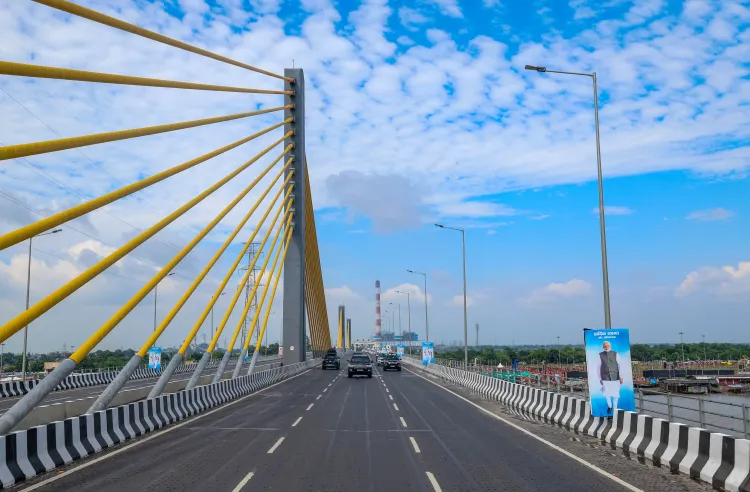Can a ‘Double Engine’ Initiative Restore Begusarai’s Industrial Heritage?

Synopsis
Key Takeaways
- Begusarai was historically significant as Bihar's industrial capital.
- Efforts from Indian Oil and other key players are essential for economic revival.
- A ‘double engine’ approach is crucial for restoring industrial growth.
- Infrastructure projects, like the new bridge, enhance logistics.
- Private investments are pivotal in rejuvenating the local economy.
New Delhi, Oct 24 (NationPress) Prime Minister Narendra Modi, during an election rally in Begusarai on Friday, reminisced about the region's former prestige as “the industrial capital of Bihar”.
Post-Independence, Begusarai’s advantageous location and river access transformed it into a significant industrial hub, primarily supported by public sector undertakings (PSUs).
In the mid-20th century, the area witnessed a substantial industrial boom, becoming a key center for state-owned enterprises. Unfortunately, this growth was succeeded by a prolonged downturn.
Beginning in the late 1990s and extending into the early 2000s, Begusarai—similar to many other industrial zones in Bihar—faced de-industrialisation. Its significance diminished due to policy oversight, operational inefficiencies, and insufficient reinvestment, resulting in the closure or downsizing of vital enterprises.
This district was once a foundational pillar of Bihar’s economy, bolstered by flagship projects in and around Barauni, such as the Indian Oil Corporation Limited (IOCL) refinery, one of the region's most crucial industrial landmarks.
The Barauni Refinery has been an essential energy source for various downstream industries, from plastics to pharmaceuticals. However, it has encountered challenges due to ageing units, routine shutdowns for maintenance, and the high costs associated with revamp projects.
Indian Oil is currently implementing a significant modernization and capacity expansion initiative at the Barauni facility as part of a national effort to enhance energy infrastructure.
In addition, the Hindustan Fertilizer plant, which was instrumental in supporting Bihar’s agriculture-driven economy, saw a decline in capacity and financial viability, ultimately shutting down under the previous public-sector model.
Recognizing the strategic necessity of domestic fertilizer production and the need to curb urea imports, the Union government prioritized the revitalization of such dormant units. This resulted in the establishment of the Hindustan Urvarak & Rasayan Ltd (HURL) fertilizer plant in Barauni, inaugurated and dedicated to the nation by the Prime Minister in March last year.
Another significant enterprise, NTPC’s Barauni Thermal Power Station, has long served as the backbone of the local industrial ecosystem. Since the late 20th century, it has struggled with outdated infrastructure and changing market and environmental standards. Recent national initiatives promoting cleaner, more efficient energy production have led to unit-wise rehabilitation, enhanced compliance, and more stringent operational management to ensure reliability.
A concerted effort from both the central and state governments—the so-called “double engine” approach—is now facilitating the revival of Begusarai’s industrial landscape.
In August this year, Prime Minister Modi inaugurated Asia’s widest six-lane bridge across the Ganga, linking North and South Bihar between Aunta in Munger district and Simaria in Begusarai, significantly enhancing logistics and connectivity.
Efforts to attract new investments and revive dormant industrial assets are gradually restoring the district’s economic vitality.
Private enterprises are also contributing to this revival. Campa Cola has announced plans for a major beverage manufacturing facility in Begusarai, which is expected to create new job opportunities and invigorate local industry.
Sudha Dairy operates a major facility in Begusarai, emerging as one of Bihar’s key milk processing and export hubs. Both the state and Union governments are collaborating to create a supportive environment for investors and encourage the establishment of new factories.










